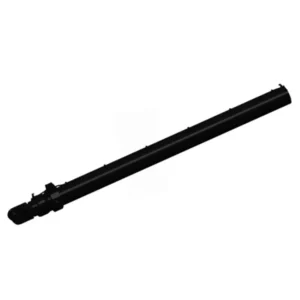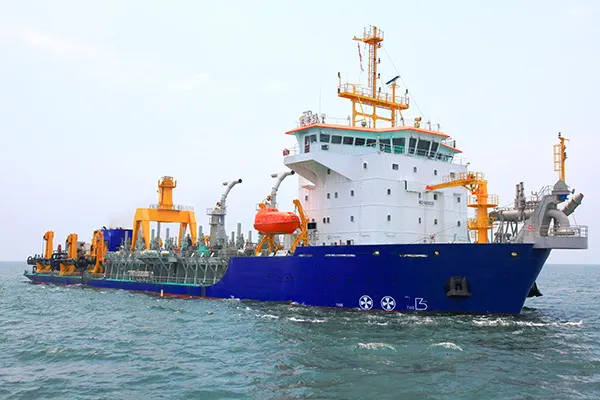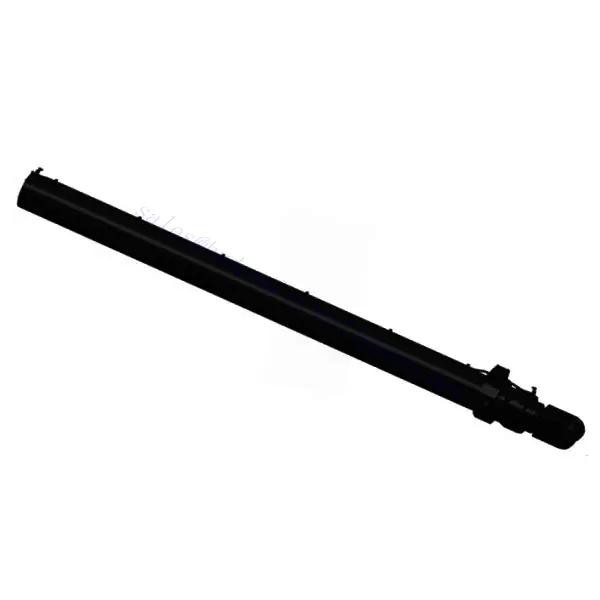Cutter Suction Dredger Inverted Pile Cylinder
Fiind unul dintre producătorii, furnizorii și exportatorii de cilindri hidraulici, oferim cilindri hidraulici și multe alte produse.
Vă rugăm să luați legătura cu noi pentru detalii.
Mail:sales@hydraulic-cylinders.net
Producător, furnizor, exportator de cilindri hidraulici.
Cutter Suction Dredger Inverted Pile Cylinder

The cutter suction dredger inverted pile cylinder is a groundbreaking hydraulic device transforming marine construction projects. With its innovative design and exceptional performance, this cylinder is crucial to modern dredging operations.
The cutter suction dredger inverted pile cylinder has revolutionized marine construction by offering exceptional performance in piling operations. Its inverted design, high-pressure capacity, and corrosion resistance make it a reliable and durable hydraulic device. By following proper usage methods and carrying out regular maintenance, marine construction professionals can maximize the efficiency and accuracy of their projects. Embrace the power of the cutter suction dredger inverted pile cylinder and experience the difference it can make in your marine construction endeavors.
Cutter Suction Dredger Inverted Pile Cylinder Key Characteristics:
- Inverted Design: The cutter suction dredger inverted pile cylinder boasts a unique inverted configuration, with the piston rod extending downward from the cylinder. This design allows for efficient and precise piling operations in marine environments.
- High-Pressure Capacity: This cylinder is engineered to withstand high-pressure conditions, ensuring reliable and robust performance even in challenging marine construction projects. It delivers the power and force necessary for driving piles into the seabed with exceptional accuracy.
- Corrosion Resistance: Constructed from high-quality materials, the inverted pile cylinder exhibits excellent resistance to corrosion, rust, and abrasion. This feature enhances its durability, making it suitable for prolonged use in harsh marine conditions.
Cutter Suction Dredger Inverted Pile Cylinder Parameter:
| Product Name | Cutter Suction Dredger Inverted Pile Cylinder |
| Features: | Provide push and pull force for the retracting and unfolding of the steel pile |
| Bore diameter: | Up to 620 mm |
| Rod diameter: | Up to 360 mm Stroke up to 5200 mm |
| Pressure: | up to 32MPa |
| Thrust force: | Maximum 7500KN |
| Pulling force: | Maximum 5000KN |
| Applications: | Cutter Suction Dredger |
Rod diameter: up to 360mm
Stroke up to 5200mm
Dredger Tank Cutter-Suction Cylinders Application:

Usage Method Of Cutter Suction Dredger Inverted Pile Cylinder:
- Preparation: Before using the cutter suction dredger inverted pile cylinder, ensure all safety precautions are in place. Conduct a visual inspection to verify that the cylinder and its components are in good condition, with no signs of damage or leaks.
- Positioning: Position the cylinder in the desired location for piling. Ensure that it is securely attached to the dredger or other equipment, providing stability and support during the operation.
- Connection: Connect the hydraulic hoses or fittings to the appropriate ports on the cylinder and the hydraulic power source. Confirm that the links are secure, leak-free, and properly aligned.
- Adjusting Stroke Length: Adjust the stroke length of the cylinder according to the required piling depth. This can typically be done using the controls or mechanisms provided. Follow the manufacturer’s instructions to ensure precise adjustment.
- Piling Operation: Activate the hydraulic power source to initiate the piling operation. The cutter suction dredger inverted pile cylinder will exert controlled force to drive the piles into the seabed. Monitor the process closely, ensuring the desired depth and accuracy are achieved.
How To Replace Seals On A Hydraulic Cylinder?
Replacing seals on a hydraulic cylinder is a common maintenance task that helps restore its performance and prevent leaks. Here’s a step-by-step guide on how to replace seals on a hydraulic cylinder:
- Safety Precautions:
- Ensure the hydraulic system is depressurized, and the cylinder is fully extended.
- Follow proper lockout/tagout procedures to prevent accidental activation of the system.
- Cylinder Removal:
- Disconnect any hydraulic hoses or fittings connected to the cylinder.
- Remove any retaining pins or bolts securing the cylinder to the equipment.
- Carefully slide or maneuver the cylinder out of its mounting brackets or connections.
- Seal Identification:
- Identify the types and sizes of the seals that need replacement. This information can be found in the cylinder’s documentation or by measuring the old seals.
- Disassembly:
- Place the cylinder on a clean work surface.
- Remove the end cap(s) of the cylinder using appropriate tools, such as wrenches or socket sets.
- Carefully remove the piston, rod, and old seals from the cylinder barrel.
- Take note of the order and orientation of the components as you disassemble them.
- Seal Removal:
- Gently remove the old seals from their respective grooves using seal removal tools or picks.
- Be careful not to damage the cylinder bore or other surfaces during this process.
- Cleaning and Inspection:
- Clean the cylinder barrel, piston, rod, and other components using a suitable cleaning solvent to remove dirt, debris, and hydraulic fluid residue.
- Inspect all parts for signs of damage or wear, such as scoring, pitting, or cracks.
- Replace any damaged or worn components as necessary.
- New Seal Installation:
- Lubricate the new seals with hydraulic oil before installing them.
- Carefully insert the new seals into their respective grooves, ensuring they are properly seated.
- Use seal installation tools or suitable improvised methods to press the seals evenly into place.
- Be cautious not to damage the seals during the installation process.
- Reasamblare:
- Install the piston, rod, and seals back into the cylinder barrel, following the correct order and orientation.
- Apply a thin layer of hydraulic oil to the seals and other contact surfaces.
- Carefully reattach the end cap(s) and tighten them securely to the manufacturer’s specifications.
- Ensure all threaded connections are properly aligned and tightened.
- Cylinder Reinstallation:
- Slide or maneuver the reassembled cylinder back into its mounting brackets or connections.
- Reattach any retaining pins or bolts to secure the cylinder in place.
- Reconnect the hydraulic hoses or fittings to the cylinder, ensuring proper alignment and tightness.
- Testing and Inspection:
- Re-pressurize the hydraulic system and check for any leaks or abnormal operation.
- Fully extend and retract the cylinder to ensure smooth movement and proper functioning.
- Inspect the cylinder and its connections for any signs of leakage or other issues.
Capabilitatea și capacitatea fabricii:
(1) Montaj
Avem o platformă de asamblare independentă de cercetare și dezvoltare de primă clasă. Atelierul de producție a cilindrilor hidraulici are patru linii de asamblare semiautomate pentru cilindri de ridicare și o linie de asamblare automată a cilindrilor de înclinare, cu o capacitate de producție anuală proiectată de 1 milion de bucăți. Atelierul de cilindri speciali este echipat cu diverse specificații ale unui sistem de asamblare semi-automat de curățare, cu o capacitate de producție anuală proiectată de 200.000 și dotat cu echipamente celebre de prelucrare CNC, un centru de prelucrare, un echipament special de prelucrare a cilindrilor de înaltă precizie, o mașină de sudură robotizată, o mașină de curățare automată, o mașină de asamblare automată a cilindrilor și o linie de producție automată de vopsire. Echipamente critice existente de peste 300 de seturi (seturi). Alocarea optimă și utilizarea eficientă a resurselor de echipamente asigură cerințele de precizie ale produselor și satisface nevoile de înaltă calitate ale produselor.


(2) Prelucrare
Atelierul de prelucrare este echipat cu un centru de strunjire cu șină înclinată personalizat, un centru de prelucrare, o mașină de honuire de mare viteză, un robot de sudură și alte echipamente conexe, care pot gestiona prelucrarea tuburilor cilindrice cu un diametru interior maxim de 400 mm și o lungime maximă de 6 metri.

(3) Sudură

(4) Vopsire și acoperire
Cu linii automate de acoperire cu vopsea pe bază de apă cu cilindru de dimensiuni mici și medii, pentru a realiza încărcarea și descărcarea automată a robotului și pulverizarea automată, capacitatea de proiectare de 4000 de bucăți pe schimb;
Avem, de asemenea, o linie de producție semi-automată de vopsire pentru cilindri mari, acționată de un lanț de putere, cu o capacitate de proiectare de 60 de cutii pe schimb.


(5) Testarea
Dispunem de instalații de inspecție și bancuri de testare de primă clasă pentru a ne asigura că performanța cilindrului îndeplinește cerințele.

We are one of the best hydraulic cylinder manufacturers. We can offer comprehensive hydraulic cylinders. We also provide corresponding cutii de viteze agricole. We have exported our products to clients worldwide and earned a good reputation because of our superior product quality and after-sales service. We welcome customers at home and abroad to contact us to negotiate business, exchange information, and să coopereze cu noi!
Faceți un tur al fabricii noastre VR:
Faceți un tur al fabricii noastre VR cu următoarele
Cum funcționează cilindrul hidraulic pentru stivuitor?
Cilindru hidraulic Aplicație:


